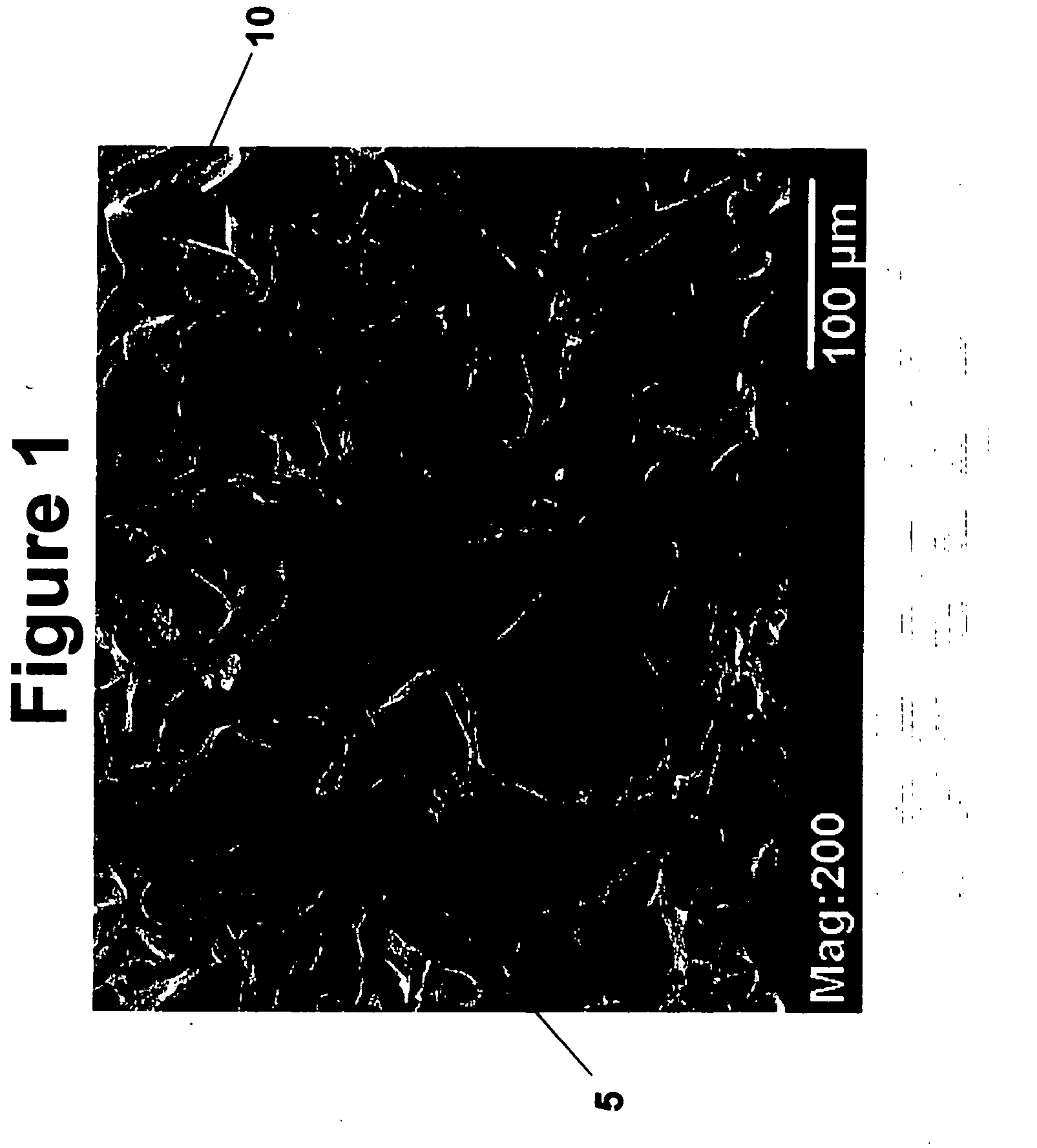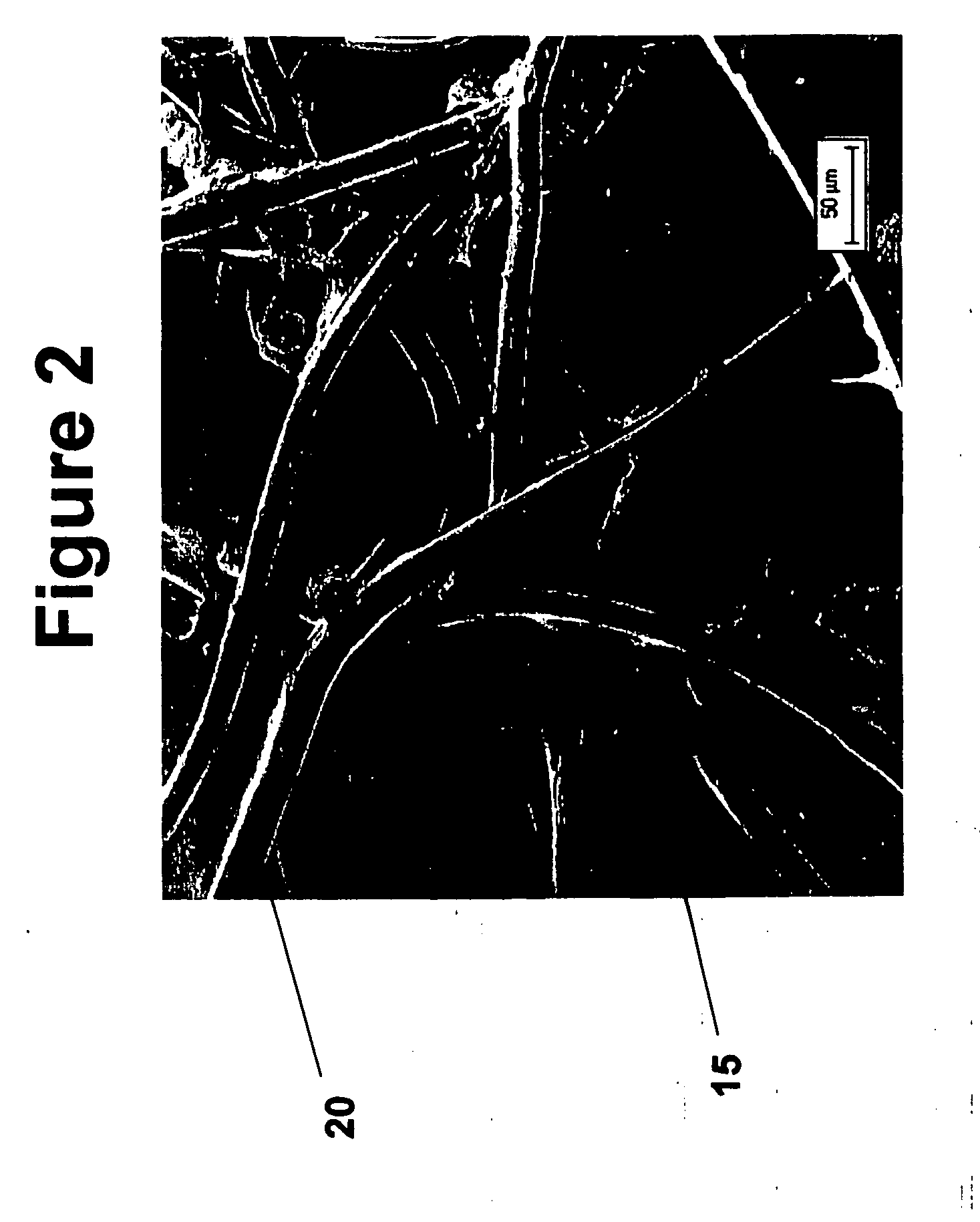Tissue scaffolds for use in muscoloskeletal repairs
a tissue scaffold and musculoskeletal technology, applied in the field of tissue scaffolds, can solve the problems of limiting its use to applications, affecting the structural integrity of tissue scaffolds, and affecting the safety of patients, and the approach using natural ha or known modified ha has proved inadequate to provide tissue scaffolds. the effect of maintaining structural integrity
- Summary
- Abstract
- Description
- Claims
- Application Information
AI Technical Summary
Benefits of technology
Problems solved by technology
Method used
Image
Examples
example 1
[0050] This example describes several procedures used to make HA-BzCl complexes according to method A.
[0051] Equimolar amounts of sodium hyaluronate (1.5 gm) and benzalconium chloride (1.3 gm) were mixed together in distilled water. After 1 hour of stirring at 25° C., the precipitated solid was filtered and vacuum dried overnight, yielding 1:1 molar HA-BzCl complex.
[0052] In a similar manner, 2:1 and 4:1 molar HA-BzCl complexes were made, except the amount of benzalconium chloride was changed from (1.3 gm) for the 1:1 molar HA-BzCl complex, to 0.65 gm and 0.33 gm of benzalconium chloride for the 2:1 and 4:1 molar HA-BzCl complexes, respectively.
[0053] An alternate procedure to form 1:1 HA-BzCl complex was also used. Sodium hyaluronate (1.5 gm) was added to a solution containing benzalconium chloride (1.3 gm) in a mixture of 1,4-dioxane (118 gm) and water (78.5 gm). The solution was stirred for 24 hours at 25° C. and centrifuged for 1 hour at a rate of 4,000 rpm using an Eppendorf...
example 2
[0054] This example describes the process of making a water-insoluble HA complex according to method B.
[0055] Triethyl amine (8.3 gm) was added to a mixture containing sodium hyaluronate (500 milligram) in anhydrous N,N-dimethylformamide (250 gm). The mixture was cooled to 0° C. and palmitoyl chloride (23 gm) was added drop-wise. The resultant suspension was heated to 45° C. and stirred for 20 hours. The suspension was poured into dialysis tubing (12,000-14,000 molecular weight cut-off) and dialyzed against methanol and isopropanol for 2 weeks. Contents inside the dialysis membrane were reduced by rotary evaporation and vacuum dried overnight, yielding 1.5 gm of a white powder.
example 3
[0056] This example describes the stability of the HA-BzCl complex fabricated according to Example 1, in distilled water or aqueous buffer solution.
[0057] First, 250 milligrams of 1:1 HA-BzCl complex made in Example 1 was suspended in 20 grams of distilled water and stirred for 2 weeks at 25° C. The remaining solid was vacuum dried at 40° C. for 48 hours using phosphorous pentoxide drying agent to yield 55 milligram of a white solid. This represents a 78 percent loss of the starting mass of 1:1 HA-BzCl complex.
[0058] In a second experiment, 72 milligrams of 1:1, 2:1, and 4:1 HA-BzCl complex made in Example 1 were each suspended in PBS solution (pH 7.4, 37° C.) and shaken in a constant temperature water bath. The degradation of the HA-BzCl was monitored by measuring the absorbance peaks corresponding to HA and BzCl at 205 nm and 262 nm, respectively, using a UV / Vis spectrometer. Calibration curves were generated using pure HA and BzCl dissolved in PBS. The results indicated that 10...
PUM
| Property | Measurement | Unit |
|---|---|---|
| molecular weight | aaaaa | aaaaa |
| diameter | aaaaa | aaaaa |
| diameter | aaaaa | aaaaa |
Abstract
Description
Claims
Application Information
 Login to View More
Login to View More - R&D
- Intellectual Property
- Life Sciences
- Materials
- Tech Scout
- Unparalleled Data Quality
- Higher Quality Content
- 60% Fewer Hallucinations
Browse by: Latest US Patents, China's latest patents, Technical Efficacy Thesaurus, Application Domain, Technology Topic, Popular Technical Reports.
© 2025 PatSnap. All rights reserved.Legal|Privacy policy|Modern Slavery Act Transparency Statement|Sitemap|About US| Contact US: help@patsnap.com



